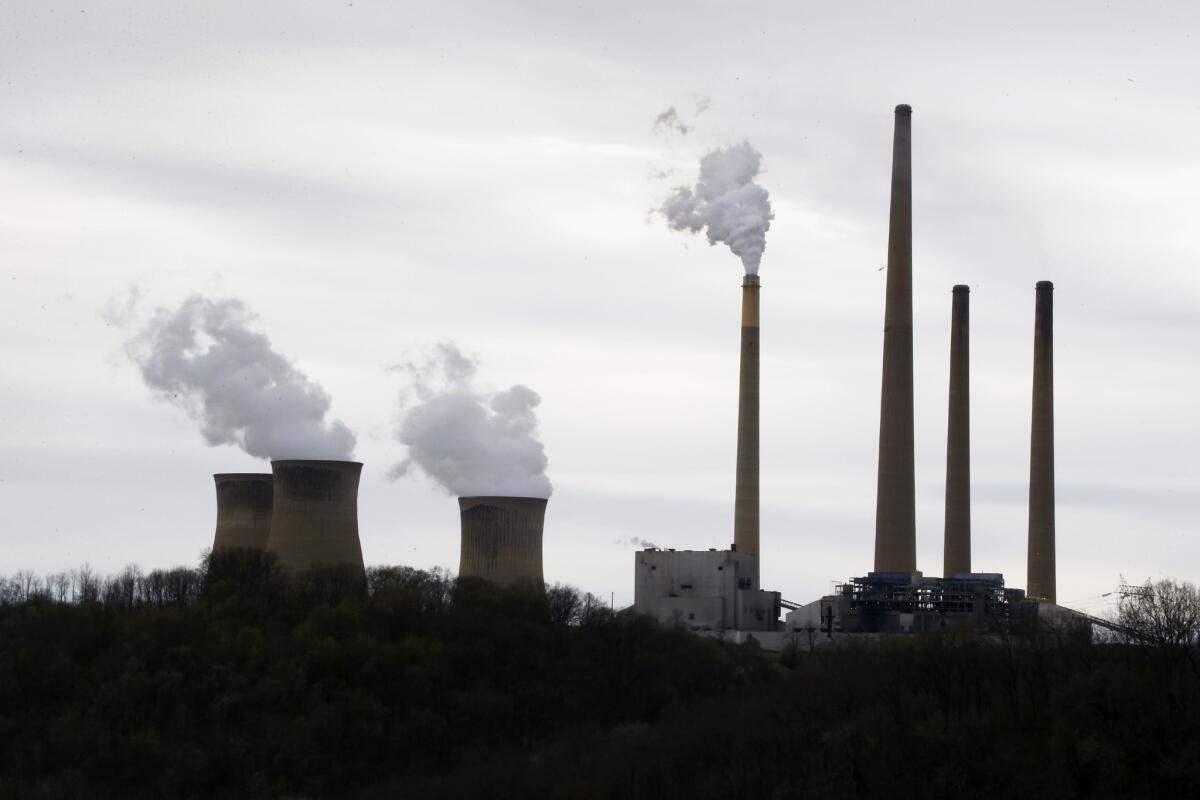Opinion: The EPA’s greenhouse gas rule may be too flexible

- Share via
Here’s some irony for you: By trying to make its new greenhouse gas proposal less draconian for states and power companies, the Environmental Protection Agency may have made it more vulnerable to a lawsuit -- by states and power companies.
A legal battle was probably inevitable, considering that many states are led by Republicans who don’t believe that climate change is happening or, if it is, that humans are causing it. And though many utilities have supported a national approach to climate rules that would let companies earn and sell credits for CO2 emissions -- a cap-and-trade system -- the EPA hasn’t gone that route.
Instead, it decided to address carbon dioxide emissions on a state-by-state basis. And rather than placing a limit on what can come out of any given power plant’s smokestacks, the agency has proposed a rate for each state’s CO2 emissions per unit of electricity generated.
But here’s the legally dicey part: The proposed rule would give states the authority to meet their rate target both through conventional means -- for example, by requiring utilities to upgrade or retire their old, CO2-spewing coal-fired plants -- and unconventional ones. The latter would include efforts to reduce the demand for electricity, for example by setting tougher energy-efficiency standards for buildings or electronics.
States could also follow California’s lead and set up a cap-and-trade system (or, better, join a regional one). And they could change their regulatory structure so that utilities’ profits would be decoupled from the amount of power they generate, giving them a financial incentive to promote energy conservation.
The industry refers to such approaches as looking outside the fence, that is, beyond a power plant’s boundaries. The more a state does to reduce emissions through these sorts of measures, the less costly the regulations will be for utilities (and their customers).
But some administration opponents argue that the law doesn’t let the EPA regulate outside the fence. The part of the Clean Air Act in question -- Section 111 -- lets the EPA set performance standards for existing sources of emissions (in this case, power plants) based on “the degree of emission limitation achievable through the application of the best system of emission reduction.” The agency believes it can define “system” broadly, looking at steps states can take that affect emissions indirectly. Predictably, some critics disagree.
Oklahoma Atty. Gen. Scott Pruitt argued that the EPA’s outside-the-fence approach would force utilities in some states to adopt greener but more expensive energy technologies.
“If the EPA is serious about providing states flexibility,” Pruitt said in a statement Monday, “the agency should use an ‘inside the fence’ approach that allows each state to set emissions standards for existing power plants by evaluating each unit’s ability to improve efficiency and reduce carbon dioxide emissions in a cost-effective way. Instead, the EPA is setting an arbitrary goal and a list of suitable policies that can help them achieve those goals. The agency, which has played a historic role in helping protect our nation’s air and water quality, is now being used to pick winners and losers in the energy context.”
But Pruitt misses the point of the EPA’s proposal. States can use inside-the-fence methods exclusively to reach their target rates, if they prefer. Doing so, however, would require more drastic steps to reduce emissions than if they incorporated outside-the-fence measures into their plan. In other words, if Pruitt and company really want to increase the cost of CO2 limits, they should force the EPA to stick to regulations that simply cap the emissions coming out of plants’ smokestacks.
“The EPA sought to use its authority to maximize flexibility and cost-effectiveness,” said Ann Carlson, faculty co-director of the Emmett Institute on Climate Change and the Environment at the UCLA School of Law. “This is about as decentralized as the federal government could be.”
Carlson acknowledged that the EPA wandered into new legal territory with its reliance on a rarely used provision of the Clean Air Act. “There’s a very big question about what the statutory language in 111(d) actually allows the EPA to do,” she said. Yet Supreme Court rulings, including a recent one upholding the EPA’s cross-border pollution limits, require courts to give considerable deference to the agency’s interpretation of the law, Carlson said.
One other element at work here is Republicans’ frustration with the Obama administration’s outside-the-fence view of executive power. A landmark effort to regulate greenhouse gases and establish a national cap-and-trade system died in the Senate in 2010, unable to overcome opposition from Republicans and some coal-state Democrats. Since then, the administration has taken a series of steps to impose greenhouse gas rules administratively, relying on a sometimes novel reading of the authority granted under the Clean Air Act and other existing laws.
Again, for those who don’t believe that humans and their industrial CO2 emissions are changing the climate for the worse, any reason to fight the EPA’s proposed rules is a good reason. But those who do believe that CO2 from power plants is a problem shouldn’t challenge the EPA just because it’s trying to give states more leeway to lighten the rules’ impact on utilities and their customers.
More to Read
A cure for the common opinion
Get thought-provoking perspectives with our weekly newsletter.
You may occasionally receive promotional content from the Los Angeles Times.










